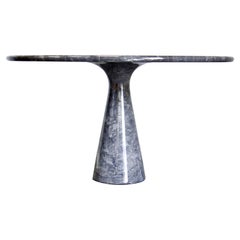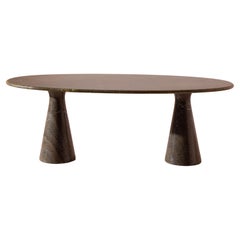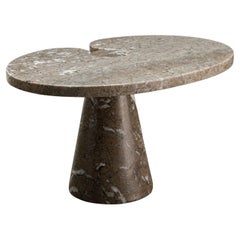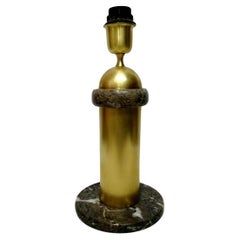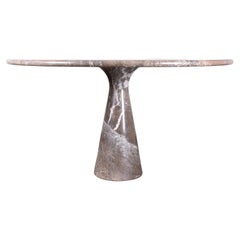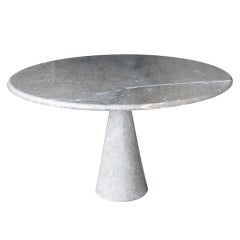Angelo Mangiarotti Dining Table In Mondragone Marble
Vintage 1970s Italian Mid-Century Modern Dining Room Tables
Marble, Carrara Marble
Vintage 1970s Italian Mid-Century Modern Dining Room Tables
Marble
Vintage 1970s Italian Mid-Century Modern Gueridon
Marble
Vintage 1970s Italian Table Lamps
Marble, Brass
Recent Sales
Vintage 1970s Italian Mid-Century Modern Dining Room Tables
Marble, Carrara Marble
Vintage 1960s Italian Dining Room Tables
Late 20th Century European Post-Modern Dining Room Tables
Marble
Late 20th Century European Post-Modern Dining Room Tables
Marble
Vintage 1970s Italian Mid-Century Modern Dining Room Tables
Marble
Vintage 1960s Italian Mid-Century Modern Dining Room Tables
Marble
Vintage 1970s Italian Dining Room Tables
Marble
Vintage 1970s Italian Post-Modern Dining Room Tables
Marble
Vintage 1970s Italian Mid-Century Modern Dining Room Tables
Marble
Vintage 1970s Italian Mid-Century Modern Dining Room Tables
Marble
Vintage 1970s Italian Modern Dining Room Tables
Marble
People Also Browsed
Vintage 1940s Italian Art Deco Cabinets
Chestnut
Vintage 1940s American Fireplace Tools and Chimney Pots
Brass
2010s American Modern Table Lamps
Ceramic
21st Century and Contemporary Italian Modern Sofas
Wool, Cotton
21st Century and Contemporary Polish Organic Modern Floor Mirrors and Fu...
Wood
21st Century and Contemporary American Scandinavian Modern Wall Lights a...
Nickel, Brass
2010s South African Minimalist Pedestals
Lacquer, Glass
2010s Mexican Brutalist Contemporary Art
Wood
21st Century and Contemporary Portuguese Modern Benches
Velvet, Wood, Ebony
21st Century and Contemporary British Organic Modern Wall Lights and Sco...
Plaster
21st Century and Contemporary British Organic Modern Wall Lights and Sco...
Plaster
Vintage 1980s Italian Mid-Century Modern Flush Mount
Aluminum, Steel, Brass
Vintage 1930s German Art Nouveau Porcelain
Porcelain
Vintage 1960s Italian Post-Modern Vanities
Metal, Brass
2010s French Modern Chairs
Fabric, Satin, Oak
2010s American Table Lamps
Brass
Angelo Mangiarotti for sale on 1stDibs
Italian architect, designer, teacher and urban planner Angelo Mangiarotti was a leading light in the international design community from the 1960s onward. While he was an adherent of the rationalist principles of purity of line and simplicity of construction, he sought to imbue his designs for coffee tables, dining chairs, sconces and other furnishings with a sense of character and lightness of spirit that was often lacking in late-20th-century modernist architecture and design.
Born in Milan, Mangiarotti studied architecture at Milan Polytechnic, graduating in 1948. Five years later, he won a visiting professorship at the Illinois Institute of Technology — beginning a peripatetic academic career that would see him teaching in numerous Italian institutions as well as in schools as far afield as Hawaii and Australia. He worked with Bauhaus eminences Ludwig Mies van der Rohe and met such greats as Frank Lloyd Wright and Walter Gropius. He returned to Italy in 1955 and would go on to work on numerous industrial, residential, commercial and civic projects in his home country, most notably a group of six railway stations in Milan.
As a designer, Mangiarotti and the development of his career embodies the evolution of modernism in the latter decades of the 20th century. In the late 1950s and early ’60s, after early experiments in plywood furniture and one-piece foam-core seating — including the 1110 lounge chair for Cassina — Mangiarotti began to design using more classic materials, from delicate, curvaceous blown-glass table lamps for Artemide to chandeliers with crystal links for Vistosi.
In 1971, Mangiarotti introduced what became his signature designs: a series of tables in marble and other stones that featured “gravity joints,” their legs held in place by the weight of the tabletop. Tables in his Eros collection have muscular proportions that anticipate the robust, overscaled lines of postmodern works that would appear 10 years later: His Eccentrico table, for example, is a striking assemblage in marble featuring a top that is cantilevered dramatically on a canted columnar base.
But simplicity and practicality were consistently the primary watchwords of Mangiarotti’s designs. The purity and elegance of the objects he created offer a graceful counterpoint to a traditional decor, yet they have a singular sculptural presence that allows them to stand out powerfully in a modern interior.
Find vintage Angelo Mangiarotti furniture on 1stDibs.
Finding the Right Dining-room-tables for You
No matter your furniture style of choice, a shared meal is one of life’s true rewards. Why not treat your family and friends to a luxurious dining experience? Browse our top picks to find the perfect antique, new or vintage dining room table for this important occasion.
Modern furniture design borrows significantly from the trends of yore, and this is especially apparent in dining tables. Ancient Egyptians made practical use of the earliest four-legged tables of wood and rock — their models bear striking similarity to the dining tables of today — while common large medieval dining room tables in England were made of oak or elm. Romans and Greeks, renowned for big banquets that involved entertainment as well as good food, used early dining room tables made of marble or wood and metals such as bronze for meals.
On 1stDibs, find a range of dining room tables that offers no shortage of options to accommodate modest interiors, midsize family homes and even lavish banquets (entertainment not included).
Beginning in the mid-19th century, more American homes featured dining rooms, where families could gather specifically for a meal together. In the States, upper-class families were the first to enjoy dining room tables, which were the centerpiece of the dining room.
Dining room tables of the Victorian era were created in a range of revivalist styles inspired by neoclassical, Renaissance, Gothic and other traditions. Furnishings of the period were made of various woods, including oak, rosewood and mahogany, and referenced a variety of decorative arts and architectural motifs. Some dining room tables finished in the Rococo style feature gorgeous inlaid marble tabletops or other ornamental flourishes handcrafted by Parisian furniture makers of the 18th century.
In many modern spaces, there often isn’t a dining room separate from the kitchen — instead, they frequently share real estate in a single area. Mid-century modern dining room tables, specifically those created by designers such as Osvaldo Borsani, Edward Wormley and Alvar Aalto, are typically clean and uncomplicated designs for a dining area that’s adjacent to where the cooking is done. Furniture of this era hasn’t lost its allure for those who opt for a casual and contemporary aesthetic.
If you’re of the modern mindset that making and sharing meals should be one in the same — and perhaps large antique dining tables don’t mesh well with your style — consider a popular alternative. Working with a tighter space may mean that a round or oval dining room table, a design that references the festive meals of the medieval era, may be a better fit. Round dining room tables, particularly those that originated in the Art Deco period, still endure as a popular contemporary substitute for traditional rectangular dining tables. Giovanni Offredi’s Paracarro table for Saporiti Italia is a striking round table option that showcases the magnificent Italian industrial design of the 1970s.
Find a collection of antique, new and vintage dining tables on 1stDibs.
